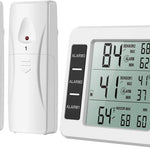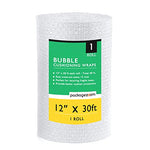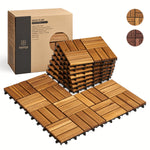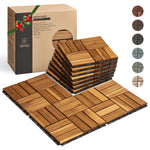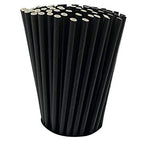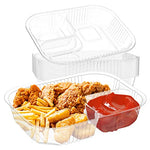You have no items in your shopping cart.
When it comes to measuring thickness, the term "1 mil" often pops up. But what exactly does it mean? In this comprehensive guide, we will explore the intricacies of this measurement unit and uncover its significance in various industries. Whether you are a scientist, engineer, or simply curious about the world around you, this article will provide you with a deep understanding of how thick 1 mil really is.
How Thick Is 1 Mil?
1 mil is a term used to describe a unit of measurement equal to 0.001 inches or 0.0254 millimeters. It is derived from the Latin word "mille," meaning one thousand, and represents a fraction of an inch or a millimeter. Despite its small value, 1 mil is widely used in different fields due to its convenience and versatility.
The Origins of "Mil"
The term "mil" can be traced back to the early days of manufacturing, particularly in the paper industry. It was originally used to indicate the thickness of a single sheet of paper, which was then extrapolated to measure other materials. Over time, the term expanded its application and became a standard unit of measurement in various industries, including plastics, films, coatings, and more.
Equivalent Measurements
To provide a better perspective on the thickness of 1 mil, let's compare it to other common measurements:
- 1 mil is approximately equal to 1/1000th of an inch or 25.4 micrometers.
- In metric terms, 1 mil is equal to 0.0254 millimeters or 0.00254 centimeters.
The Significance of 1 Mil in Different Industries
The thickness of 1 mil may seem minuscule, but it plays a crucial role in a wide range of industries. Let's delve into some of these industries and understand how 1 mil measurements are applied.
1. Packaging Industry
The packaging industry heavily relies on precise measurements to ensure product safety and integrity. 1 mil is commonly used to determine the thickness of flexible packaging materials such as plastic films and foils. By accurately measuring the thickness, packaging manufacturers can optimize their production processes and ensure the appropriate barrier properties for perishable goods.
2. Printing Industry
In the printing industry, 1 mil serves as a standard unit for measuring the thickness of various materials. It is particularly important when it comes to printing processes that require precise registration and control. By knowing the thickness of materials like paper, cardstock, or plastic sheets, printers can adjust their machinery accordingly to achieve high-quality prints.
3. Electronics Industry
In the electronics industry, especially in the manufacturing of circuit boards and semiconductor components, 1 mil measurements are of paramount importance. The delicate nature of electronic components necessitates precision in every aspect, including thickness. By utilizing 1 mil as a measurement unit, engineers and manufacturers can ensure optimal functionality and performance of electronic devices.
4. Automotive Industry
The automotive industry utilizes 1 mil measurements in several applications, ranging from manufacturing car parts to coatings and paint films. For instance, the thickness of automotive paint films is crucial for achieving a uniform and durable finish. By adhering to specific 1 mil measurements, automobile manufacturers can provide aesthetically pleasing and long-lasting paint jobs.
5. Construction Industry
In the construction industry, 1 mil plays a significant role in applications such as waterproofing, insulation, and roofing materials. By accurately measuring the thickness of these materials, contractors can ensure proper installation and maintain the structural integrity of buildings. Additionally, architects and engineers rely on 1 mil measurements to determine the appropriate thickness of various construction components.
FAQs about 1 Mil Measurements
-
Q: How thick is 1 mil compared to a human hair?
- A: On average, a human hair has a thickness of approximately 2 to 3 mils, making it significantly thicker than 1 mil.
-
Q: Is 1 mil the same as 1 millimeter?
- A: No, 1 mil is equal to 0.0254 millimeters. Although they sound similar, millimeters are a metric unit, while mils are an imperial unit of measurement.
-
Q: Can you provide examples of items with 1 mil thickness?
- A: Certainly! Examples of materials with 1 mil thickness include plastic bags, shrink wraps, food packaging films, and certain types of adhesive tapes.
-
Q: Are there different variations of mil measurements?
- A: Yes, there are slight variations in mil measurements, such as "0.9 mil" or "1.5 mil." These variations indicate a thickness slightly below or above the standard 1 mil measurement.
-
Q: Are there any conversion factors to easily convert mils to other units?
- A: Yes, converting mils to inches can be done by dividing the value by 1,000, and converting mils to millimeters can be achieved by multiplying the value by 0.0254.
-
Q: How precise are 1 mil measurements in various industries?
- A: 1 mil measurements are considered reasonably precise for many industries. However, certain applications may require even more precise measurements, necessitating the use of more advanced measurement tools.
Conclusion
In conclusion, 1 mil is a versatile and widely used unit of measurement, indicating a thickness of 0.001 inches or 0.0254 millimeters. Its significance spans across numerous industries, including packaging, printing, electronics, automotive, and construction. By understanding the concept of 1 mil, professionals can make informed decisions and ensure the desired quality and functionality of their products.
So, the next time you come across the term "1 mil," you can confidently decipher its meaning and appreciate its importance in various fields.


